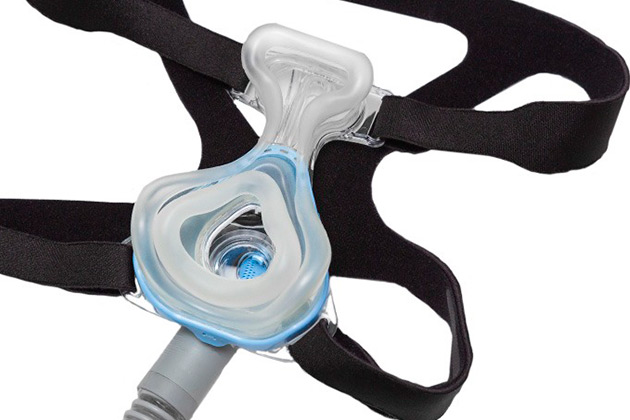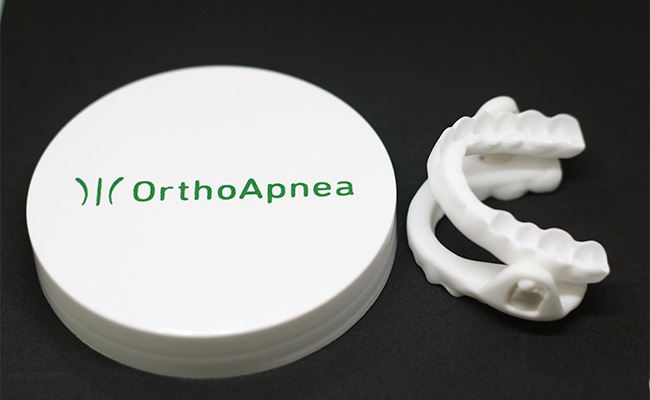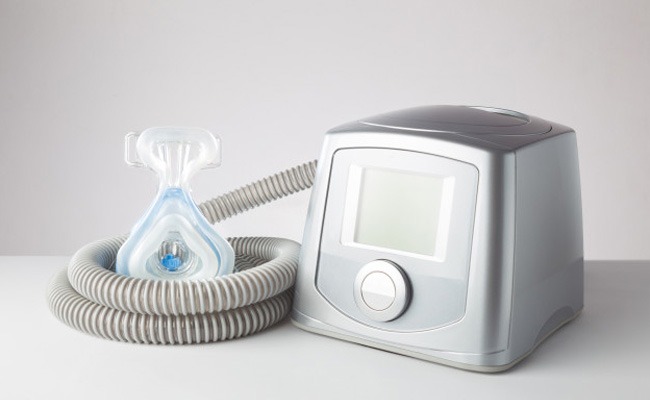© Clínica Dental Gross Dentistas. Todos los derechos reservados
Obstructive Sleep Apnoea Syndrome (OSAS) is defined as a breathing disorder during sleep where the passage of air decreases due to the recurrent obstruction or collapse of the upper airway. This causes in the patient a lack of oxygen in the lungs and frequent awakenings during the sleep making it difficult for the patient to reach the deep and restful phase of sleep. This obstruction can be in any section of the path between the nasal wings and the hypopharynx for structural reasons, excessive relaxation of the muscles during sleep, the weight of the tissues themselves and other temporary reasons such as tonsillitis.
When the apnoea disappears, the muscles regain their normal tone, the flow of air into the lungs resumes and then it is when snoring occurs.
There are different types of apnoea, and the OSAS (obstructive sleep aponea syndrome) is the most frequent type and, as already mentioned, it is due to an obstruction or collapse of the airway for different reasons. There is another type of apnoea called CENTRAL aponea. The origin of this one is neurological, and it causes a lack of signal from the brain to the respiratory muscles even though
there is no actual obstruction.
MIXED forms (complex sleep apnoea syndrome) can also coexist. Given the prevalence of OSAS, we will focus on it


OSAS can be caused by excessive relaxation of the more than 30 muscles that make up the upper airway or by the patient’s medical conditions including obesity, certain genetic syndromes, endocrine disorders, neuromuscular disorders, enlarged tonsils, heart and kidney failure or even premature birth.
The main test to determine OSAS and its severity is the sleep study (polysomnogram) that must be evaluated by a pulmonologist (a physician who specialises in the respiratory system). This test requires spending a night in a sleep unit or it can be carried out at the patient’s home. With this study we seek to analyse how the patient breathes while sleeping, the levels of oxygenation in blood, and ultimately, to check the quality of the patient’s sleep.
After performing the test, the apnoea/hypopnoea index (AHI) is evaluated, which analyses the number of apnoea/hypopnoea (episodes characterised by the lack of entry or exit of air into the lungs for 10 or more seconds) in the patient for 1 hour. The following results can be obtained in terms of severity:
This syndrome usually goes unnoticed and the relatives are the ones who let the patient know about the snoring.
The most common symptoms that can cause the OSAS are the following:
In cases where the apnoea is severe, apart from the symptoms mentioned above, the risk of suffering from cardiovascular diseases (hypertension, ischemic heart disease such as heart attacks or angina pectoris and cerebrovascular accidents), diabetes and cancer increases. These symptoms can be controlled with devices (CPAP-MAD), which assure that the air flows properly into the lungs, furthermore preventing some of these diseases to appear. That is why it is so important to attend a specialised centre for a treatment for sleep apnoea. At Gross Dentistas we count on a qualified team and the latest technology to offer a customised and effective treatment.
It is a device that delivers continuous positive pressure to the airways through a mask (that covers the nose and mouth or only the nose) or nasal bridge preventing it to collapse.
It is used in cases of severe or moderate apnoea together with drowsiness and/or considetable cardiovascular symptoms.
The MAD (mandibular advancement device) allows the mandible, tongue, hyoid and suprahyoid muscles to advance, making it easier for the air to flow through the oropharyngeal route.
This allows the passage of adequate air flow into the lungs and, therefore, to the rest of the structures.
It generally has a high tolerance index and has been proved to improve the AHI (apnoea/hypopnoea index), hourly saturation index, and snoring.
The device is tailor-made which allows it to be adapted to each mouth. It consists of two acrylic splints (upper and lower) joined anteriorly by a screw mechanism that controls the degree of mandibular advancement.
It has the advantage, due to its design, of allowing the opening and lateral mobility of the jaw within certain limits as well as mouth breathing in the contact position between the splints, together contributing to greater acceptance by the patient.
When is it NOT advisable to place a MAD?
First visit
Second visit
Third visit
Fourth visit
After 6 months
In order to manufacture the MAD, we take a mold of your upper and lower quadrants with silicone or intraoral scanner and a bite which will be 60 % of the range of movement between the most posterior and most anterior position of the jaw. Then we will send everything to the laboratory.
When the device is ready, it will adapt perfectly to your mouth. We will show you how to put it on and how to put it out, how to clean it and keep it in proper conditions. We will also show you some exercises to do at home that you will have to carry out when removing the device in the morning to maintain your normal occlusion.
At the beginning, we will only carry out frequent check-ups until we achieve the proper adaptation of the device. Afterwards, the check-ups will take place every 2 months, every 6 months and finally, once per year.
In case it is necessary, it is possible to increase or decrease the forward movement of the jaw thanks to the screw mechanism of the MAD (variable rate of advance), but this is always performed by the dentist.
After 6 months, it would be advisable to perform a second sleep study (polysomnogram) to check the efficacy of the device, in addition of the improvement of the symptoms.
Contact us!
Once the device is placed, some guidelines must be followed, such as carrying out some specific exercises and to use a teether in the morning. When we remove the MAD, to maintain the occlusion of the teeth, check-ups should be performed by the dentist from time to time to check the adaptation and whether it is necessary to adjust the device, hygiene measures to follow and the following recommendations to sleep better:

It is possible to feel light toothache on the incisor teeth, increased salivation or, on the contrary, dry mouth and muscle pain and pain on the TMJ (temporomandibular joint). These effects are normally light and tend to disappear with the time.
Our clinics

CLINICA DENTAL GROSS SL ha sido beneficiaria de Fondos Europeos, cuyo objetivo es la mejora de la competitividad de las PYMES, y gracias al cual ha puesto en marcha un Plan de Acción con el objetivo de reforzar la digitalización y la competitividad de las pymes durante el año 2024. Para ello ha contado con el apoyo del Programa Pyme Digital de la Cámara de Comercio de Málaga. #EuropaSeSiente

CLINICA DENTAL GROSS SL ha sido beneficiaria de Fondos Europeos, cuyo objetivo es la mejora de la competitividad de las PYMES, y gracias al cual ha puesto en marcha un Plan de Acción con el objetivo de impulsar el uso seguro y fiable del ciberespacio y la competitividad de las pymes durante el año 2024. Para ello ha contado con el apoyo del Programa Pyme Cibersegura de la Cámara de Comercio de Málaga. #EuropaSeSiente
© Clínica Dental Gross Dentistas. Todos los derechos reservados